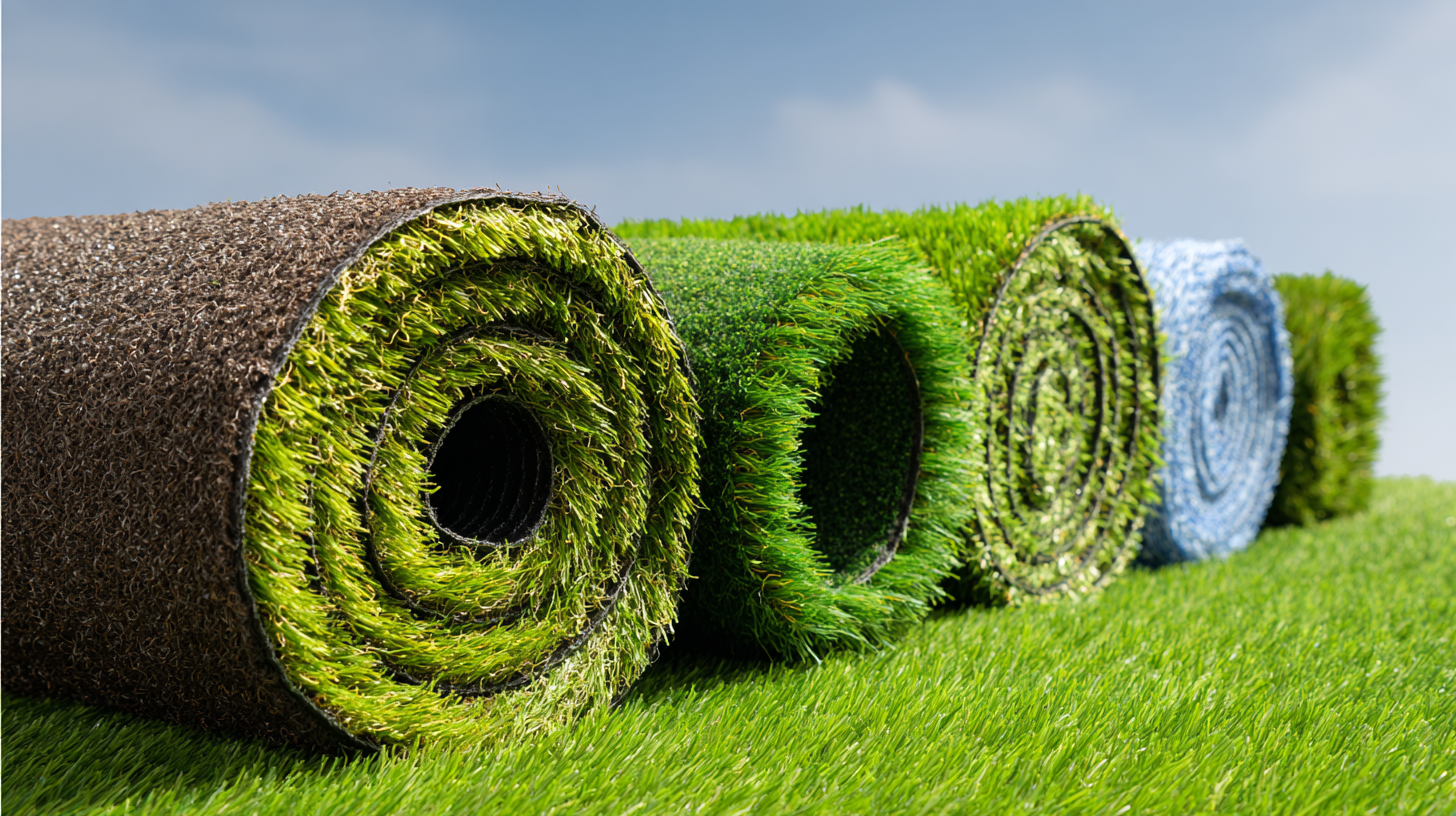Essential Checklist for Choosing the Perfect Artificial Turf for Your Needs
When it comes to enhancing outdoor spaces, choosing the right type of Artificial Turf can make all the difference. Whether you're looking to create a beautiful lawn, a safe play area for children, or a low-maintenance landscape, selecting the perfect artificial grass requires careful consideration. The benefits of different types of Artificial Turf vary widely, from durability and aesthetic appeal to sustainability and cost-effectiveness. This blog will guide you through an essential checklist that takes into account various factors ensuring that your choice of Artificial Turf aligns with your specific needs and lifestyle. By understanding what each type offers, you can make an informed decision that not only elevates your environment but also maximizes the enjoyment of your outdoor space.
Understanding Your Specific Needs for Artificial Turf Solutions
When choosing artificial turf, understanding your specific needs is essential for making the right decision. Different environments and uses demand unique features from artificial grass. For instance, if you have pets, you'll want a product that's durable and easy to clean, with drainage capabilities to manage any mess. Likewise, if the turf will be used for a children’s play area, safety and softness will be top priorities, so selecting a product that offers a cushioned feel is crucial.
Additionally, consider the climate and location of your installation. In areas with high foot traffic, look for turf that can withstand wear and tear while maintaining its aesthetic appeal. If your region experiences extreme weather conditions, you may need turf that can handle heat and UV exposure without fading. Assessing these specific needs will guide you toward the ideal artificial turf solution that not only fits your lifestyle but also enhances your space effectively.
Balancing practicality and aesthetics will ensure that you choose a product that meets your requirements for years to come.
Key Factors to Consider When Choosing Artificial Turf
When selecting the perfect artificial turf for your needs, several key factors should be meticulously considered. One of the most crucial elements is the turf's pile height, which typically ranges from 1.5 to 2.5 inches. According to the Synthetic Turf Council, a taller pile can provide a more realistic appearance and feel, making it ideal for residential lawns or sports applications where aesthetics matter. However, shorter piles are often preferred for high-traffic areas, as they can better withstand wear and tear while maintaining their shape.
Another important consideration is the shock absorption capability of the turf. Reports from the International Play Equipment Manufacturers Association indicate that installing turf with adequate cushioning can significantly reduce the risk of injuries in playground settings. Opt for products with a shock pad or those that meet the required safety standards, such as the ASTM F1292, to ensure the turf can adequately protect users. Additionally, evaluating the infill material used is essential. Options like crumb rubber, sand, or organic materials can impact both the performance and environmental footprint of the turf, making it vital to select the right infill based on usage and maintenance requirements.
Comparing Different Types of Artificial Turf Materials
When it comes to artificial turf, the material used plays a crucial role in determining longevity, appearance, and performance. The two most common types of materials for artificial turf are polyethylene and nylon.
Polyethylene is renowned for its soft texture and resilience, making it an ideal choice for residential lawns and play areas. This material feels more like natural grass and is less abrasive, making it suitable for children and pets. Additionally, polyethylene turf often comes in various shades of green, mimicking the look of traditional grass.
On the other hand,
nylon turf boasts superior durability and strength, making it a popular choice for high-traffic areas such as sports fields. Its ability to withstand heavy use without losing structure or color gives it an edge for commercial applications.
However, nylon tends to be more expensive and can feel stiffer underfoot compared to polyethylene.
Understanding the differences between these materials is essential for making an informed decision.
Consider your specific needs, such as the intended use and the level of foot traffic, when selecting the right type of artificial turf for your space.
Evaluating Quality: What Makes Good Artificial Turf?
When evaluating quality in artificial turf, several key factors come into play that can significantly influence your decision. First and foremost, the material used in the turf is crucial. Generally, the best artificial grass is made from polyethylene or nylon, as these materials offer durability and a realistic appearance. Assess the weight of the turf as well; heavier options often correlate with higher quality, as they are better equipped to withstand wear and tear while maintaining their appearance over time.
Another important aspect to consider is the infill used in the turf installation. Quality infill not only helps the blades stand upright but also adds weight, allowing for better stability during use. Look for options that are made from environmentally friendly materials, such as recycled rubber or organic products, which can improve drainage and reduce heat absorption. Furthermore, double-check the warranty and lifespan provided by the manufacturer. A solid warranty can give you peace of mind, indicating the brand's confidence in the product's longevity and performance. By focusing on these quality indicators, you can ensure that your artificial turf investment will meet your needs for years to come.

Budgeting for Your Artificial Turf Installation and Maintenance
When budgeting for artificial turf installation and maintenance, it's essential to consider both the initial costs and the long-term financial implications. Recent discussions surrounding synthetic turf in places like Santa Clara County highlight the need to examine local regulations and potential future costs. Investing in artificial turf can initially seem pricey—with projects like the proposed $6.7 million installation at Boyertown's football stadium—yet the savings on water and maintenance can be significant over time.
It's also crucial to consider how upcoming legislative changes may impact your budget. A new Florida law preventing local governments from banning synthetic turf on certain residential properties underscores the shift towards acceptance of artificial options. Moreover, while some communities are investing heavily in these fields, others are questioning the necessity of such expenditures amid rising property values. Being informed about these trends will not only aid in making financially sound choices today but will also pave the way for flexibility in the face of changing regulations and community needs.






